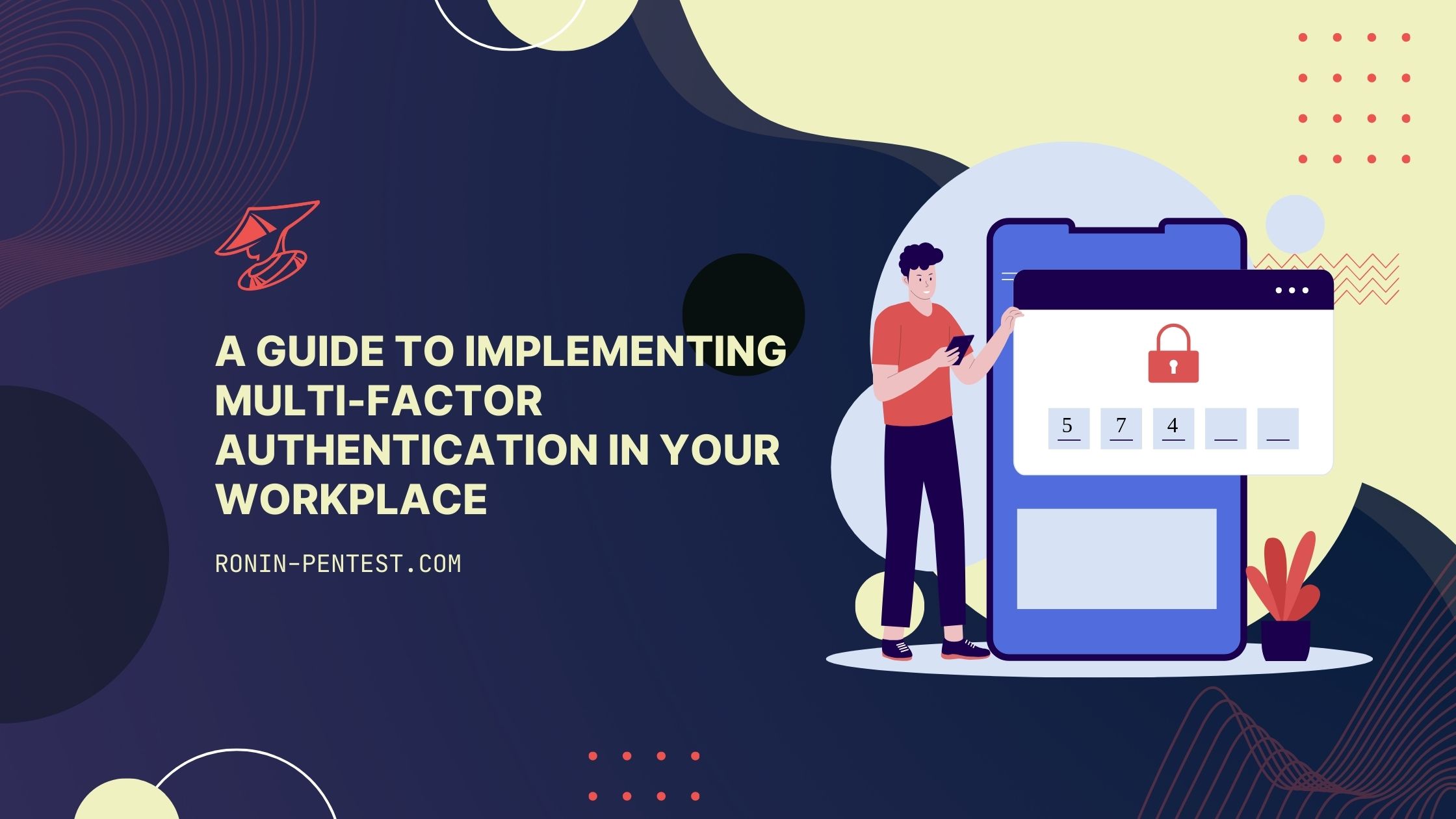Strengthening Security: A Guide to Implementing Multi-Factor Authentication in Your Workplace
by Ben Brown | 05/22/2024

by Ben Brown | 05/22/2024

As the digital landscape becomes increasingly complex and security breaches become more frequent, implementing robust security measures is essential for any organisation. Multi-factor authentication (MFA) is a security system that requires more than one method of authentication from independent categories of credentials to verify the user's identity for a login or other transaction. This guide outlines how to effectively implement MFA in your workplace, enhancing your security and protecting sensitive information in 2024.
MFA adds an additional layer of security, making it significantly harder for cybercriminals to gain access to a person's devices or online accounts because knowing the victim's password alone is not enough to pass the authentication check. Statistics show that businesses that implement MFA experience fewer breaches, as it effectively addresses the vulnerabilities of a standard password-only approach.
Before implementing MFA, it's crucial to assess your current security posture and identify the systems that require enhanced security. High-risk areas typically include access to financial records, personal employee data, client information, and proprietary business data. Determine which systems are critical and would cause significant harm if compromised.
There are several forms of MFA, and choosing the right one depends on your specific business needs and the sensitivity of the data being protected. Common methods include:
Each method has its strengths and weaknesses concerning convenience, security, and cost. For example, while SMS verification is easy to implement, it is less secure than hardware tokens or biometric verification due to vulnerabilities like SIM swapping.
Creating a detailed plan for rolling out MFA is crucial. The plan should include timelines, budget, resources needed, and a communication strategy to inform and educate employees about MFA. Consider starting with a pilot program that covers the most sensitive areas, then gradually roll out to other parts of the organisation.
Effective implementation of MFA requires buy-in from all users, which means training is essential. Employees need to understand why MFA is important, how it works, and how to use it correctly. Training should also cover what to do in case of problems, such as losing access to their MFA device or receiving an authentication request they did not initiate.
After implementing MFA, monitor its effectiveness and user feedback closely. Be prepared to make adjustments, whether updating the technology used, changing providers, or providing additional training to users. Regularly review your MFA setup to ensure it meets your security needs and adjust as those needs change or as new threats emerge.
Implementing multi-factor authentication is one of the most effective ways to enhance your organisation's security posture. By requiring multiple forms of verification, MFA significantly reduces the risk of unauthorized access, ensuring that your data remains secure. While it may initially seem daunting to implement, the steps outlined above can help streamline the process, ensuring a smooth transition and stronger security for your business in 2024.
Start scanning your projects for free. You will get a free breakdown of your security status. Start securing your future now.
Get started